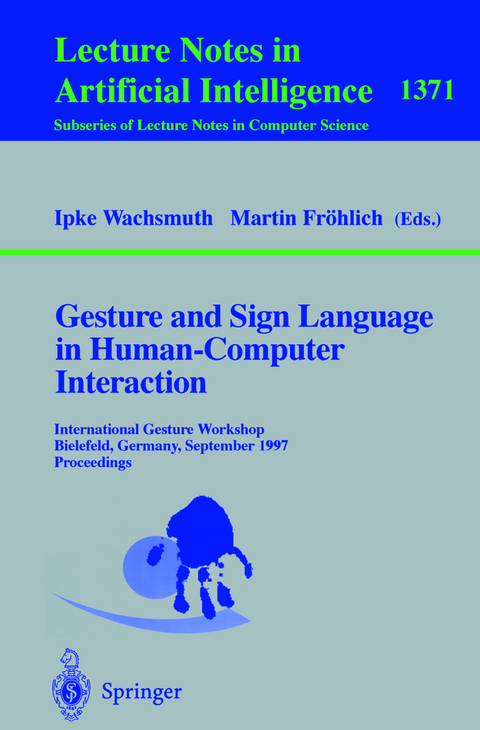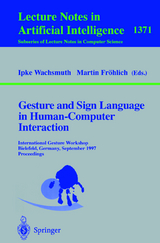Gesture and Sign Language in Human-Computer Interaction
Springer Berlin (Verlag)
978-3-540-64424-8 (ISBN)
The book presents 25 revised papers together with two invited lectures. Recently, gesture and sign language have become key issues for advanced interface design in the humanization of computer interaction: AI, neural networks, pattern recognition, and agent techniques are having a significant impact on this area of research and development. The papers are organized in sections on semiotics for gesture movement, hidden Markov models, motion analysis and synthesis, multimodal interfaces, neural network methods, and applications.
Dr. Martin Fröhlich, Certified Information Systems Auditor (CISA), ist Partner im Bereich Process Assurance von PricewaterhouseCoopers WPG AG, Düsseldorf. Seine Schwerpunkte sind Prüfung und Beratung in den Bereichen Financial Service und IT-Governance.
Research challenges in gesture: Open issues and unsolved problems.- Progress in sign language recognition.- Movement phases in signs and co-speech gestures, and their transcription by human coders.- Classifying two dimensional gestures in interactive systems.- Are listeners paying attention to the hand gestures of an anthropomorphic agent? an evaluation using a gaze tracking method.- Gesture-Based and haptic interaction for human skill acquisition.- High performance real-time gesture recognition using Hidden Markov Models.- Velocity profile based recognition of dynamic gestures with discrete Hidden Markov Models.- Video-based sign language recognition using Hidden Markov Models.- Corpus of 3D natural movements and sign language primitives of movement.- On the use of context and a priori knowledge in motion analysis for visual gesture recognition.- Automatic estimation of body regions from video images.- Rendering gestures as line drawings.- Investigating the role of redundancy in multimodal input systems.- Gesture recognition of the upper limbs - From signal to symbol.- Exploiting distant pointing gestures for object selection in a virtual environment.- An intuitive two-handed gestural interface for computer supported product design.- Detection of fingertips in human hand movement sequences.- Neural architecture for gesture-based human-machine-interaction.- Robotic gesture recognition.- Image based recognition of gaze direction using adaptive methods.- Towards a dialogue system based on recognition and synthesis of Japanese sign language.- The recognition algorithm with non-contact for Japanese sign language using morphological analysis.- Special topics of gesture recognition applied in intelligent home environments.- BUILD-IT: An intuitive design tool based on directobject manipulation.
| Erscheint lt. Verlag | 15.4.1998 |
|---|---|
| Reihe/Serie | Lecture Notes in Artificial Intelligence | Lecture Notes in Computer Science |
| Zusatzinfo | XII, 320 p. |
| Verlagsort | Berlin |
| Sprache | englisch |
| Maße | 155 x 233 mm |
| Gewicht | 468 g |
| Themenwelt | Informatik ► Software Entwicklung ► User Interfaces (HCI) |
| Informatik ► Theorie / Studium ► Künstliche Intelligenz / Robotik | |
| Schlagworte | 3D • algorithms • Anthropomorph • Artificial Intelligence • Cognition • dialogue systems • gesture recognition • Hidden Markov Model • Human-Computer interaction • Human-Computer Interaction (HCI) • Knowledge • Mensch-Computer-Kommunikation • multimodal communication • neural network • pattern recognition • Performance • Rendering • robot • User Interfaces |
| ISBN-10 | 3-540-64424-5 / 3540644245 |
| ISBN-13 | 978-3-540-64424-8 / 9783540644248 |
| Zustand | Neuware |
| Haben Sie eine Frage zum Produkt? |
aus dem Bereich




